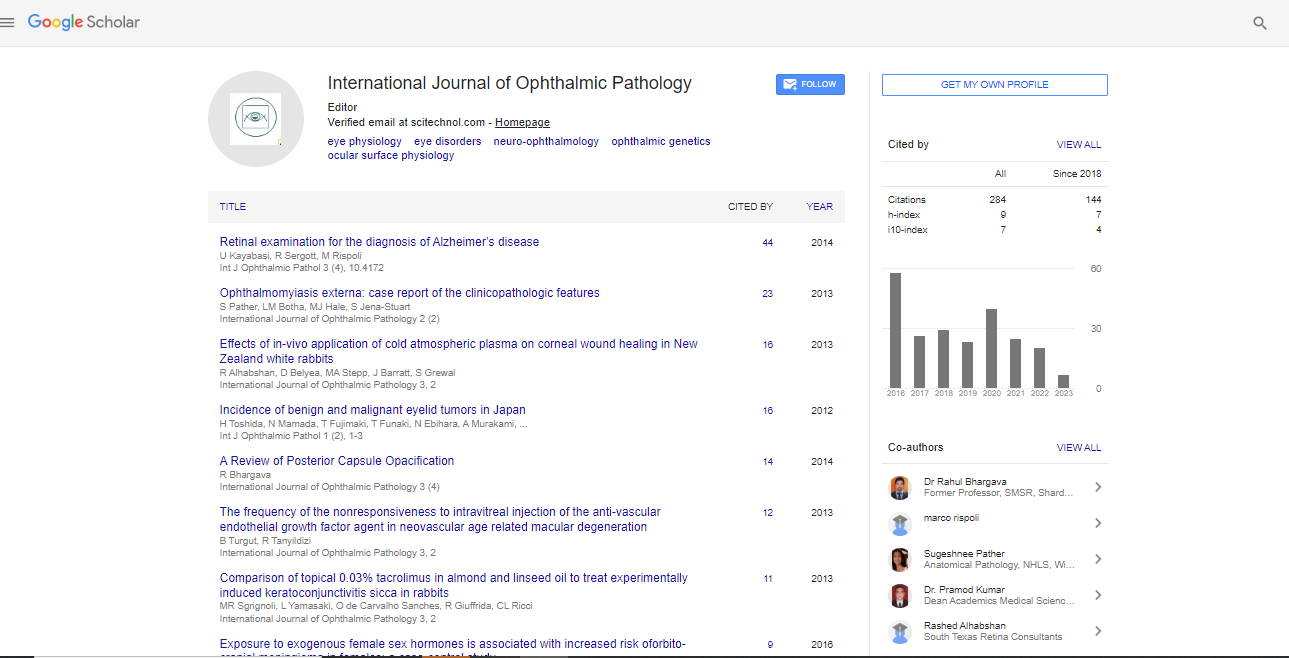DMEK: The state-of-the-art in endothelial keratoplasty
Samer Hamada
The Eye Clinic London, UK
: Int J Ophthalmic Pathol
Abstract
Endothelial keratoplasty has become the gold standard in treating endothelial corneal dystrophies. Although Descemet Stripping Automated Endothelial Keratoplasty (DSAEK) has been in practice for more than 10 years, it is not a true anatomical repair of the damaged descemets and endothelial layers. This is why optical and visual outcomes remains below those expected from lamellar small incision keratoplasty. On the other hand, Descemets Membrane Endothelial Keratoplasty (DMEK) is the latest generation of endothelial keratoplasty that offers a true anatomical restoration to the disease corneal endothelium. It is sutureless restoration of endothelial layers with rejection rate less than 1%. The learning curve is rather long and competency takes longer time than DSAEK to Penetrating Keratoplasty (PKP). I will present an overview of DMEK advantages compared to DSAEK and surgical tips and tools to help starters to excel in their DMEK practice.
Biography
Samer Hamada is an Ophthalmologist and Cornea Surgeon performing eye surgeries at his practice, The Eye Clinic London. With nearly two decades of experience, he is recognized as a leading expert in the field of Cataract, Refractive Lens Exchange (RLE) and Corneal Surgeries, and is frequently asked to lecture at International Eye Conferences. He has performed thousands of cataract surgeries and RLE surgeries using the latest technological advancements in ophthalmology. He offers laser cataract surgery with the option of artificial lenses, called intraocular lenses (IOLs), to replace the natural eye lens that has been clouded by a cataract. These IOLs are used for the restoration of near, intermediate and far vision. He is one of the very few eye surgeons who offer trifocal intraocular lens implants.
 Spanish
Spanish  Chinese
Chinese  Russian
Russian  German
German  French
French  Japanese
Japanese  Portuguese
Portuguese  Hindi
Hindi 